Dateline – July 2023 – Denton County
Terns are a family of seabirds birds characterized by their similarity in appearance and behavior. What variations there are between tern species generally manifests in size, coloration, and conduct. Of all the terns found in North America, the Least Tern is the smallest–roughly the same size as a Northern Mockingbird, with Least Terns possessing longer wings and heavier bills than the State Bird of Texas.
Least Terns are sleek birds designed for speed, as evidenced by their long pointed wings and streamlined silhouettes. Adult Least Terns wearing their breeding plumage are largely white underneath, with gray feathers covering their upper surfaces. Their heads sport a black cap and mask. Bills are bright yellow, while their feet are colored a darker shade of orange. Non-breeding adults have a more subdued plumage and a darkly colored bill. Juveniles forego the gray feathers of the adults in favor of a faintly barred pattern on their top-sides.

Least Terns feed almost exclusively on small fish that they pluck from sizeable, but shallow, bodies of water. When hunting, Least Terns cruise at low altitude, flying just above lakes and ponds in search of prey. On occasion, they will hover in place until they draw a bead on their intended victim. Once a likely target is spotted, the Least Tern will wing over in a steep dive and hit the water hard in an effort to snag the hapless minnow swimming just below the water’s surface.
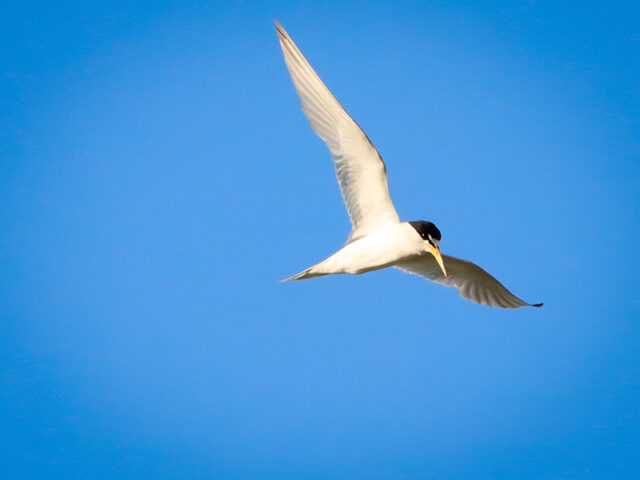

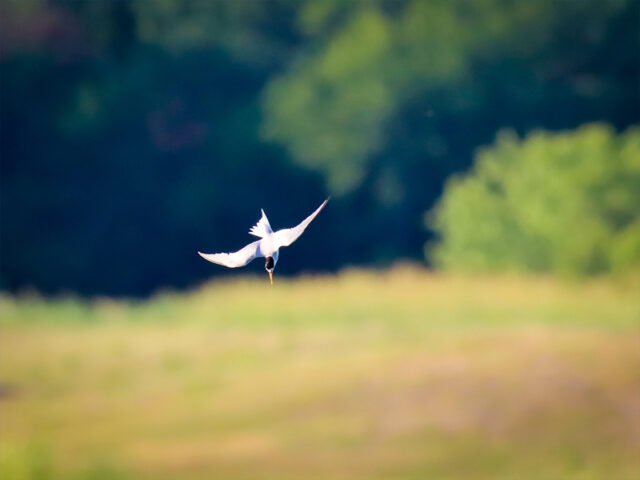




There are a several subspecies of Least Tern in North America. Each inhabits and breeds in a unique range on the continent. The Interior Least Tern (Sterna antillarum athalassos) is the subspecies found in North Texas. These birds are so named because they breed in the interior of the continent–mostly along the Mississippi River valley and some of its western tributaries.
Texas Parks and Wildlife : Interior Least Tern (Sterna antillarum athalassos)
In North Texas, Interior Least Terns historically were found nesting on sand and gravel bars near the Red River. For years, Least Terns–of all subspecies–have been declining in number as much of their preferred habitat has been repurposed or otherwise taken over for human use. The Interior Least Tern was no exception–the subspecies found here in North Texas was also in trouble.
Only a few decades ago Least Terns were seldom seen in Dallas/Fort Worth area, even though the metroplex is located only a short distance from their breeding grounds on the Red River. But, in our part of North Texas the situation has recently changed for the better. Interior Least Terns are now relatively common all across Dallas/Fort Worth. Something important changed in the intervening years!

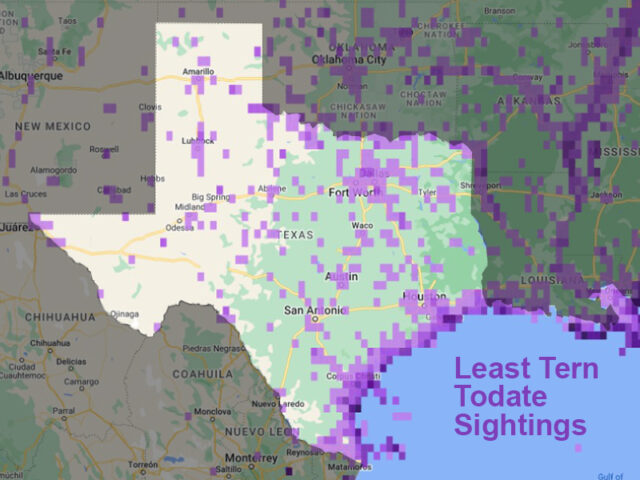
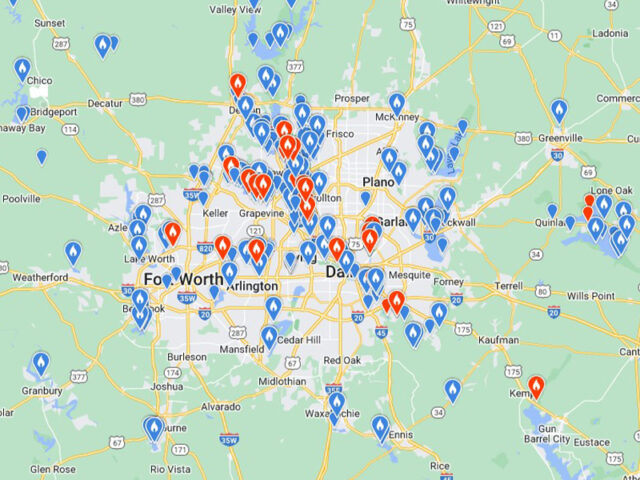
Least Terns breed in the summer. They begin their courtship in late spring, and spend up to five month at their chosen site incubating eggs and raising their young. Least Terns often nest in large colonies, preferring large flat sand bars or gravel bars as places to construct their nests. Abundant habitats like these are what historically inspired terns to form nesting colonies along the Red River in North Texas

Picture courtesy Wikimedia Commons


Picture courtesy Wikimedia Commons

Picture courtesy Wikimedia Commons
Over the last several decades there has been a boom in warehouse construction in DFW. These large buildings are often built in locations close to the Trinity River, its tributaries, or its many borrow-pit lakes. Even more, these warehouse have large flat roofs which are sometimes covered with gravel. As it turns out, these roofs can be excellent stand-ins for the sand and gravel bars Least Terns prefer to nest on. Today in North Texas, these adaptable small birds are making ready use of these man-made nesting grounds.
The result is an incredible rebound in Interior Least Tern numbers all around the metroplex and in other places across their range in Texas. In 2021 their population had recovered to the point where the Interior Least tern could be removed from the endangered species list. While only a few decades ago seeing a Least Tern in Dallas/Fort Worth was rare sight–usually a migratory bird–today there is a healthy and growing population to be found living right here in the metroplex. Least Terns can be readily observed in many places around town.
The “interior” Least Tern, which nests in the vast Mississippi River drainage, was listed as Endangered in 1985 when the population was estimated at fewer than 2,000 birds. By 2021, following years of conservation efforts, the population had increased to 18,000, allowing the species to be removed from the Endangered Species List.
The Cornell Lab All About Birds




in areas close to rivers and other water features

With steadily increasing numbers across North Texas, there are now many places around Dallas/Fort Worth where Least Terns can be observed. When Least Terns are found hunting for minnows and other small fish, they can be quite enjoyable to watch. Often the birds will make multiple passes over a body of water in their search for suitable prey–creating ample opportunities for observation and photographs. Even more, when the terns fly into a steady headwind, it slows their normally erratic flight, and can hold them virtually stationary midair as they hover hunt. This is an especially nice accommodation for wildlife photographers attempting to capture images of these normally very speedy birds.


If you discover a place where Least Terns are fishing, it is possible to spend hours watching their aerobatics. In some situations they can be observed at very close range. We’ll close out this article with a selection of photographs of Interior Least Terns in action, photographed right here in the Dallas/Fort Worth metroplex…


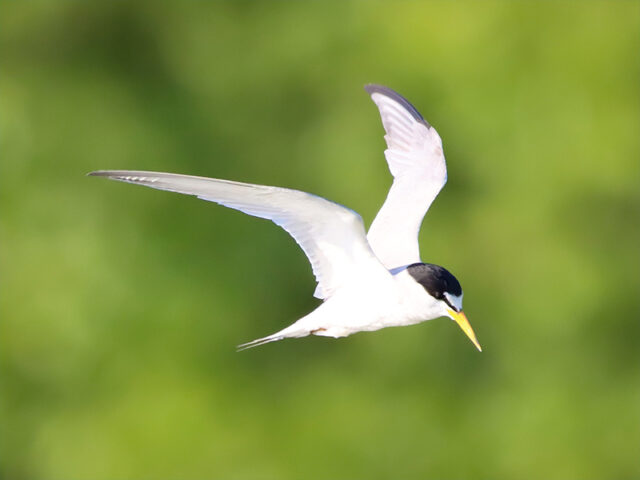






before committing to a dive







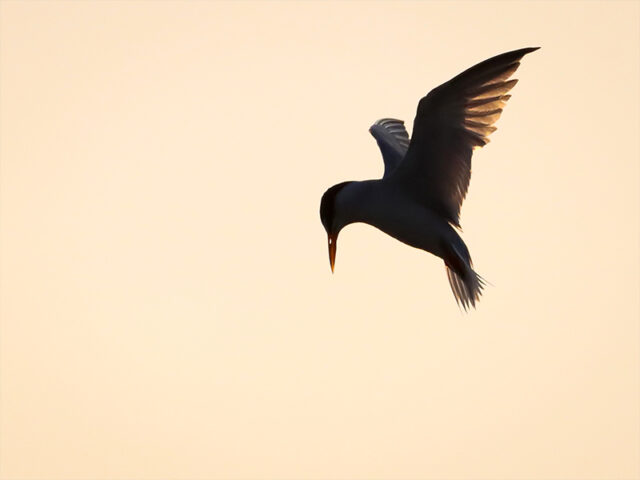






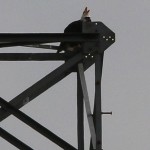
Really nice article, Chris, with good photography. BTW, the fish the bird early in the article was carrying is an inland silverside, Menidia berylina, fwiw.
Oh, and a later photo, captioned “Back to the Nest,” shows a bird with what is probably a threadfin shad, _Dorosoma petenense_.